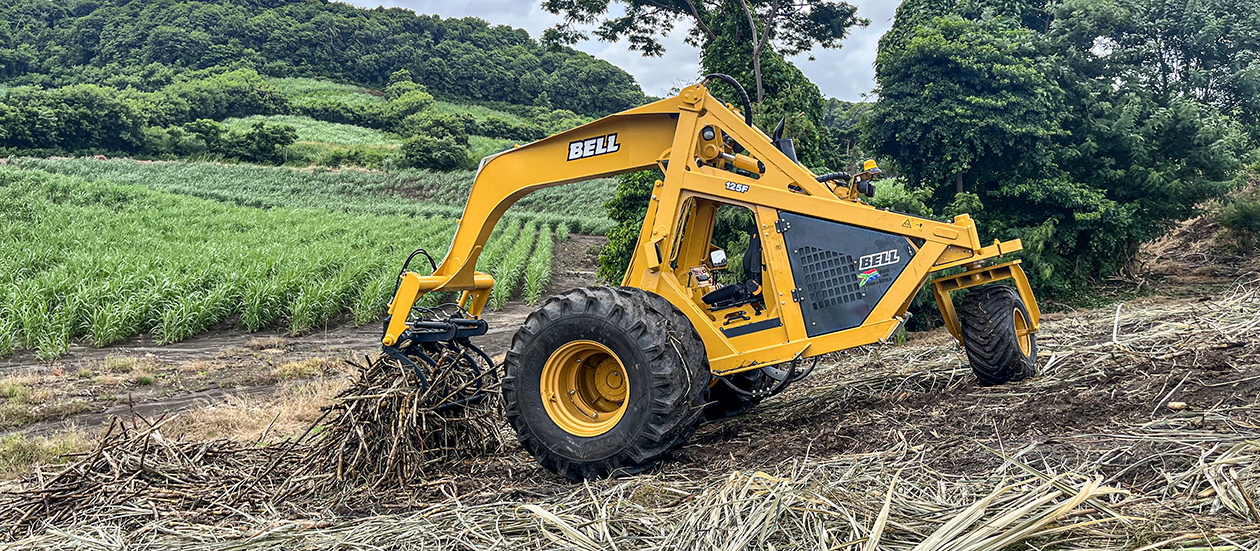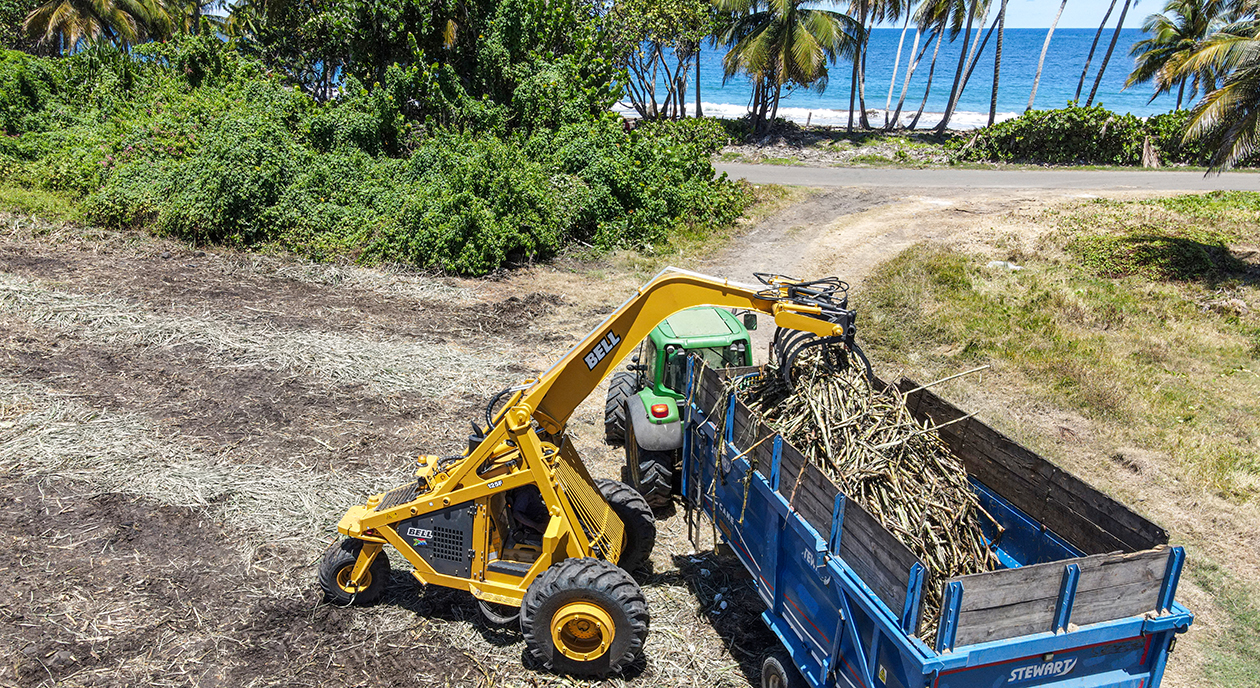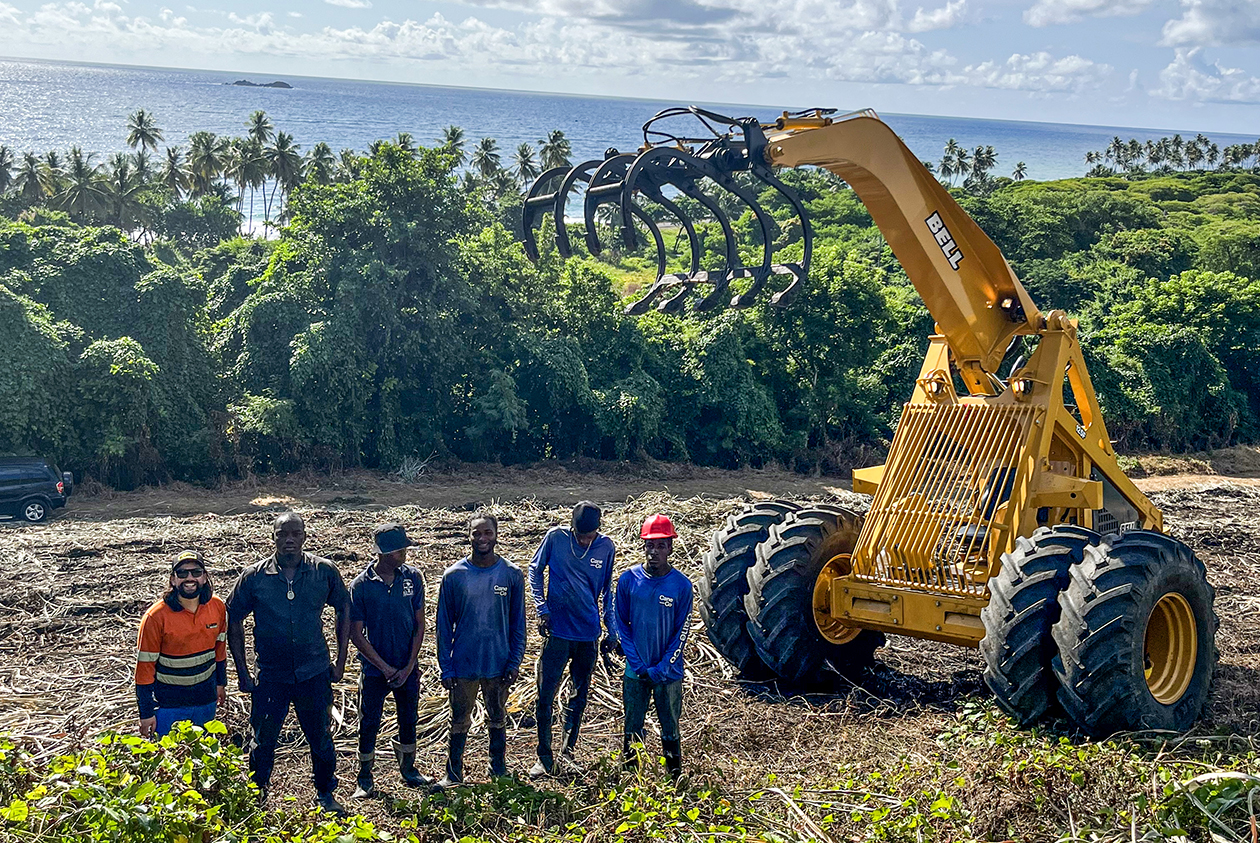Bell Cane Loader makes a good first impression in Grenada
Published: 25 January 2024

José Carlos Rocha Filho, Marketing and Commercial Manager at Latin Equipment Norte, describes his experiences as he explores new frontiers in the Caribbean region to support customer success and sustainability-related goals with Bell Cane Loaders.
Considered the Caribbean Gateway, Grenada is situated in the delightful Caribbean region and is part of the West Indies. It is one of the smallest countries in the Americas, with the territory comprising the primary island, also named Grenada, and several smaller neighboring islands.
In recent years, along with the agriculture industry, Grenada has been developing its economic potential through international tourism, which stands out as the foremost sector contributing to foreign currency earnings. Often referred to as the “Spice Island,” the country is a major global producer of nutmeg and mace, ranking second only to Indonesia among producers of these spices. Grenada is characterised by uneven terrain punctuated with nutmeg and sugarcane plantations and is blessed with favourable growing conditions.
Like many other Caribbean islands, Grenada features an exotic tradition of rum production that has become an integral part of its cultural heritage. The “Grenadine Rum”, as it is called, truly sets Grenada apart in the world of spirits due to its unique, distinctive flavour profile, featuring hints of tropical fruits, spices, caramel, vanilla, and oak.
Operations
CaneCo is dedicated to cultivating, harvesting, and milling superior sugarcane. Premium varieties are selected for their suitability to the island’s climate and soils, as well as resistance to disease and drought. With an annual mill input of over 10 000 tons, it currently produces over
500 000 litres of absolute alcohol (LAA), which might yield over one million litres of rum. The group also manages the Renegade Rum Distillery, producing and exporting premium selections to European markets.
Driven by the rising demand for exporting their rum, Latin Equipment was called upon to provide a better solution for the sugarcane loading process. This presented an opportunity to introduce the new Bell 125F Cane Loader as an alternative to the small, tracked excavators typically used for the task.
In the absence of a purpose-built machine to load whole cane sticks, regular eight to 10-ton excavators are commonly seen in operations throughout the island. These machines are not designed to work in harvesting operations.
According to CaneCo’s maintenance manager, the prolonged use of excavators in sugarcane loading applications can significantly increase operating costs and negatively impact production targets due to excessive mechanical repair and downtime. In addition, their limited ground clearance and width make some of these machines susceptible to bogging down in soft soil conditions, and prone to overturning in steep slope areas commonly found in plantation land.
Their plantations are mostly set on uneven, gently sloping terrain that occasionally gives way to rough, cut-up spots. We observed considerable elevation changes ranging from 60 to 140 feet, with some sections featuring steep slopes reaching up to 25°, offering an extra challenge and risks for the small track excavator to operate.

First impressions
The Bell Tri-Wheelers have established a remarkable reputation for their exceptional reliability, cost-effectiveness, and productivity around Latin America. The first Bell 125F rolled into CaneCo’s facility in August 2023, and at first impression, it exceeded all expectations.
Several aspects come into play when you operate in steep slope areas, and such conditions pose a range of challenges regarding the cane loader performance. The Bell 125F outfitted with the dual-wheel set performs outstandingly when it becomes too steep for the track carrier excavator. Due to its weight spread over the double wheels, the machine offers less ground pressure, minimising both soil compaction and ensuring optimal traction and stability. This empowers the 125F to perform optimally and safely in rough and variable terrain such as that found across the island. Additionally, mitigating soil compaction is highly desired to ensure healthy sugarcane regrowth, claims CaneCo’s planting crew manager.
In the operation with the tractor and trailer following the loader, the machine consistently achieves 40 tons per hour. From the stockpile into large trucks in the loading zone, the machine does over 50 tons hourly. In addition to the spacious cab, the machine brings the advantage of nimble, precise movements and easy manoeuvrability, resulting in a notable boost in productivity compared to the small excavators. Also, the controls are simple, without electronic complexities, intuitive, and user-friendly, which was especially noted by the operators.
Furthermore, the Bell Cane Loader’s daily maintenance offers more than just convenience. The new F-series sets a new standard in daily service points, providing easier access to general machine components from the ground. So, the convenience of quicker servicing, inspecting, and maintenance notably contributes to reduced downtime.
Productivity and cost studies up to this point have demonstrated promising results not only with increased productivity but also a 20% reduction in diesel consumption per ton loaded as well. The Bell 125F has effectively streamlined operations and improved efficiency and safety, demonstrating being the right fit for the operation.
Latin Equipment Norte takes pride in representing Bell Equipment, which continues developing products to address the ever-evolving demands of the agriculture and forestry industry. We are confident that all our efforts, coupled with this project’s remarkable achievements, will set a precedent for expanding the presence of Bell Equipment into existing and new countries throughout Latin America.
Article supplied by Jose Carlos Rocha F. - Latin Equipment Norte.

